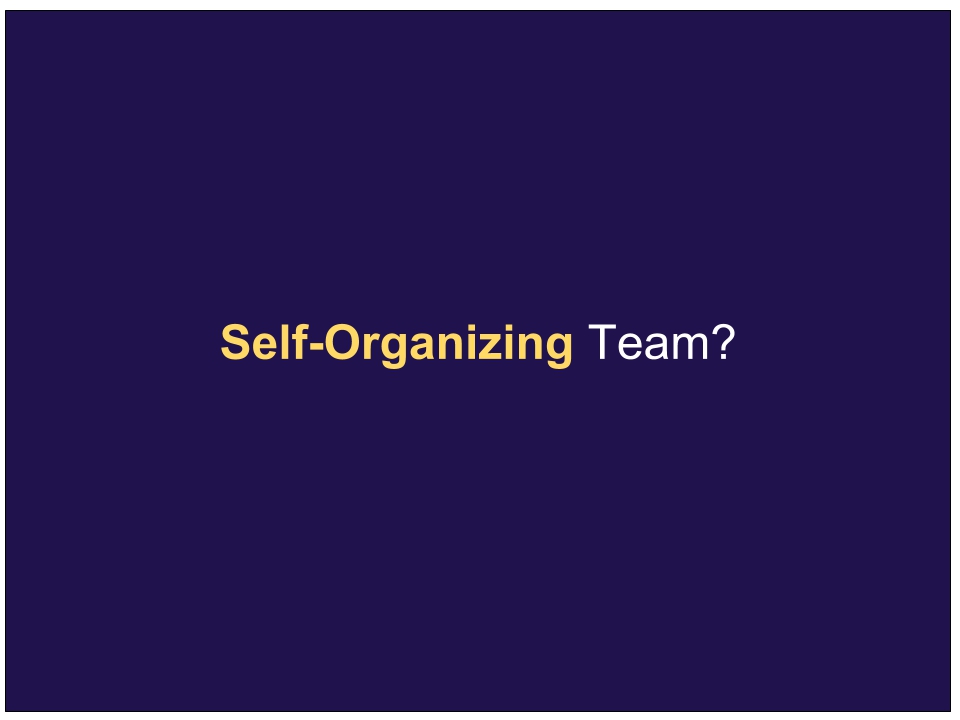SCRUM has a very specific definition of how the team operates. The team is responsible for pulling user stories off the backlog in priority order. The team then organizes itself to determine HOW that work will get done. The team is responsible for the task creation, task accomplishment, quality level and task assignment for the work necessary to deliver the user story commitment. The team has lots of flexibility in the HOW work is achieved. However, for that flexibility the team gives up authority on prioritization (although a strong contribution is expected).
With those expectations we can look towards definitions. One of the better references I have seen is the article from Nitin Mittal . He defines self-organizing teams as:
- They pull work for themselves and don’t wait for their leader to assign work. This ensures a greater sense of ownership and commitment.
- They manage their work (allocation, reallocation, estimation, re-estimation, delivery, and rework) as a group. They still require mentoring and coaching, but they don’t require “command and control.”
- They communicate more with each other, and their commitments are more often to project teams than to the ScrumMaster.
- They understand requirements and aren’t afraid to ask questions to get their doubts clarified. They continuously enhance their own skills and recommend innovative ideas and improvements.
Creating the team
If there is one thing that management needs to deliver in a SCRUM world it is the team. This means getting the right skills and personalities on the team in the right balance. Management needs to create teams motivated to work for each other and for the team to accomplish a goal. They need to have the right balance of junior and senior technical leadership. In a scrum team there will be tasks across the technical spectrum and making sure that there are opportunities for everyone is critical. The team needs to develop a level of trust, openness and communication/collaboration which is only found in performing teams (reference Tuckman’s model).
What does this all mean? It means that if you are rolling out SCRUM, be prepared to go back to and use your team formation and behavior skills. Can you build the team with the right formula of skill and personality? Do you remember all those exercises that you learned about teaching team vulnerability, team trust and communication? Do you have resources to lean on to observe and teach team behaviors? Be prepared, it’s all about the team. Create the right team, get the right behaviors, help the team move through the forming->storming->norming->performing model and you will see your SCRUM rollout be much more successful.
Are you an engineer or engineering leader who is looking to work and learn in an Agile culture that works on leading edge technology focused on delivering customer value for our Small Business Customers? Check us out at jobs.constantcontact.com.
Mike Adler
VP, Engineering
http://techblog.constantcontact.com/software-development/scrum-teams-and-teamwork/






